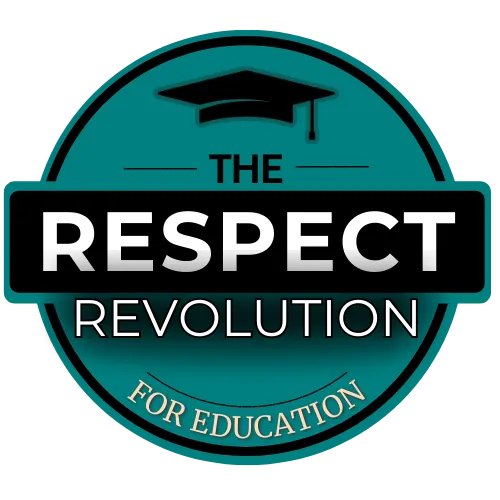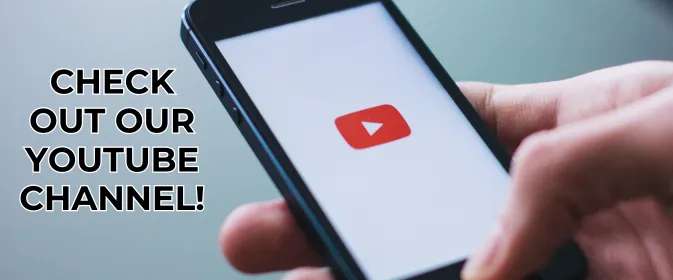
RESOURCE ARTICLE
How to Build Respect and Connection with Difficult Students
Brad Reed | Director | The Respect Revolution | 26 November 2024
Are you struggling with a student who just seems unreachable? Maybe you've tried every approach you can think of—rules, consequences, warnings—but nothing seems to work. I’ve been there. Dealing with challenging students can feel exhausting, frustrating, and often disheartening, but I’ve discovered that sometimes, all it takes is a change in perspective to make a real difference. Today, I’ll share an approach that helped me turn around relationships with even the toughest students—no discipline or threats required.
This isn’t just about managing behavior. It’s about fostering genuine respect and building connections that last. Let’s dig into three practical steps you can start using right away.
Step 1: A Major Mindset Shift
When it comes to connecting with difficult students, the first step is a big mindset shift. Here’s the idea: every student is the expert at being themselves. Just as your identity is shaped by countless experiences, so is theirs. They’re navigating life with their own set of beliefs, challenges, and values, and their choices reflect the world as they understand it.
Think about how we often respond to students: “If you don’t do this, you’ll get an F. Don’t you want to graduate?” While our intentions may be to motivate, these statements can feel dismissive from the student’s perspective. They already know the stakes, and being reminded of them doesn’t change their reality. To them, we’re simply reinforcing our own agenda, which doesn’t build trust.
Instead of judging their choices, try meeting students where they are. Let go of the urge to correct or reprimand; instead, take the opportunity to understand.
Step 2: Create Space for Connection
Once you've adjusted your mindset, you can start to create a real connection by asking open-ended questions. Think beyond academics and show interest in their lives. Instead of, “Why don’t you want to pass?” try, “What’s on your mind these days?” or “What’s important to you outside of school?” These questions make space for students to share their perspectives and show that you’re genuinely interested in understanding them, not just pushing your agenda.
Creating this space lets students see that you respect them as individuals, not just as students. It can help dissolve some of the barriers that lead to defiance or apathy and create an environment where they feel safe to be themselves.
Step 3: Identify Behaviors that Truly Disrupt
As teachers, we often label certain actions as “disruptive” simply because they don’t align with our expectations. But in reality, not every behavior we dislike is actually disruptive. Start observing which behaviors genuinely interrupt learning and which are simply expressions of the student’s personality or worldview.
If a behavior doesn’t cause an actual distraction, consider letting it go. High school students are young adults, navigating life and making choices they believe in. Punishing them for apathy or defiance won’t change their outlook; it’ll likely just reinforce their resistance. When a behavior truly disrupts, address it in a respectful way by explaining how it impacts the classroom, rather than issuing demands or consequences.
An Example in Practice
To illustrate how this approach works, let me share a story about a student I’ll call James. James was apathetic, defiant, and at times, infuriating. I initially tried the typical disciplinary approaches, but nothing seemed to reach him. So, I started asking about his life, his goals, and his family. Through these conversations, I learned something crucial: James’s family took great pride in their work at the local fish plant. For him, excelling in academics felt like a betrayal of his roots.
Suddenly, my pushing him toward college made sense—it wasn’t motivating; it was alienating. Understanding this allowed me to reframe our conversations and find ways to make school relevant to his goals. Over time, he began to engage more, even considering community college as a possible next step. Once he could see a future that respected his family’s identity, his attitude in class completely changed. We built a real connection, grounded in understanding and respect.
Bringing It All Together: The Respect Revolution
The approach I’ve shared here is part of what we call the Respect Revolution. It’s not about control or compliance; it’s about genuine partnerships with students based on mutual respect. When we lead with respect, students feel valued, and engagement often follows naturally. The beauty of this approach is that it’s more than just a strategy—it’s a mindset shift.
This Respect Revolution can transform your classroom, turning it into a space where students feel safe, respected, and open to learning. And as you’ve seen, it doesn’t take complex techniques or rigid rules—just empathy, patience, and a willingness to see students as people with their own stories, not just as students to be managed.
If you’re interested in exploring this approach further, I’ve created a free guide called Building Positive Relationships with High School Students. It contains eight actionable steps you can use to start building stronger connections with your students today.
Classroom management doesn’t have to be a constant struggle. By focusing on respect and understanding, we can build classrooms where students are more than just compliant—they’re genuinely engaged. Thanks for all the work you do as teachers; it truly makes a difference.

PRIVACY POLICY | TERMS & CONDITIONS | CONTACT US
© COPYRIGHT 2024. THE RESPECT REVOLUTION. ALL RIGHTS RESERVED
Stay connected and join the movement!





